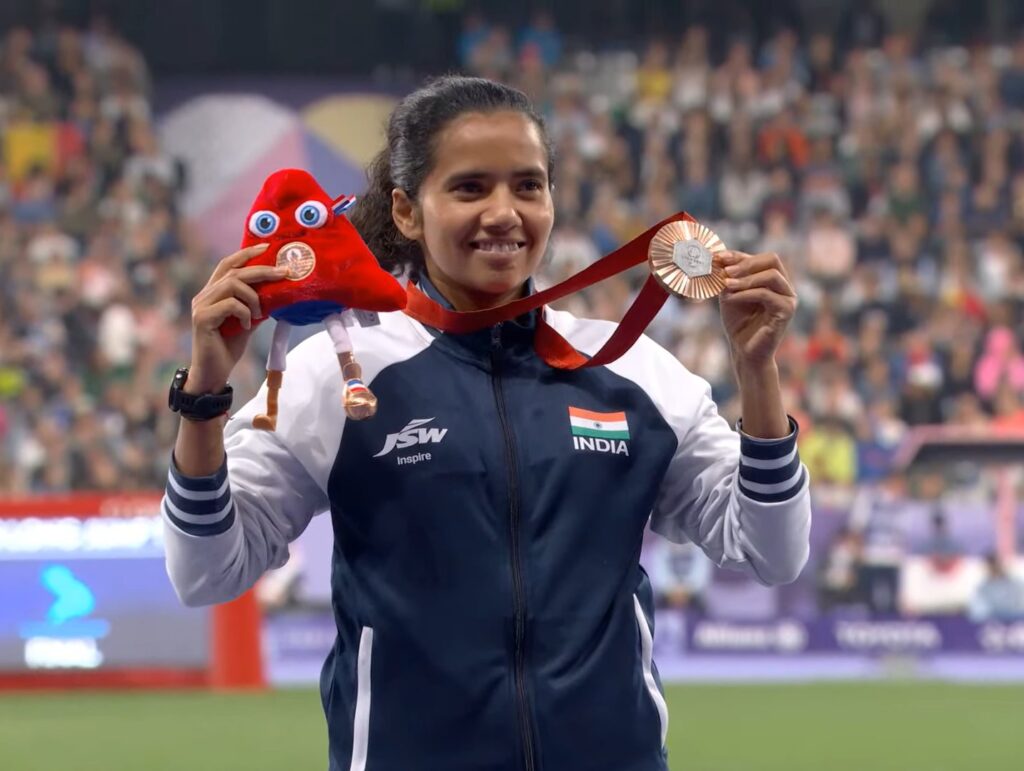Preethi Pal had long been told that her feet would never carry her far. Born with deformities in both feet, she endured years of painful treatments, superstitious rituals, and the stigma of being considered a burden in her rural community. Yet, this September in Paris, the 22-year-old para sprinter rewrote Indian sporting history, becoming the first athlete from independent India to win a track medal at either the Paralympics or Olympics.
Pal claimed bronze medals in both the T35 100-meter and 200-meter races, achievements that elevated her from obscurity to a national symbol of resilience.
Childhood of Struggle
Growing up in Hashampur village, Pal wore calipers for eight years. Family members and neighbors often saw her condition as a curse. “She was told she would never run like other children,” recalled one of her coaches. Yet, what seemed a disability—her tendency to run on her toes—would later prove her competitive edge on the track.
Finding a Path in Sport
Her introduction to athletics came at the Kailash Prakash Stadium in Meerut, where para athlete Fatima Khatoon first encouraged her to try sports. Under coach Gajendra Singh, Pal began formal training, often walking miles to practice while juggling household responsibilities. Despite limited resources, she discovered raw pace and discipline that quickly set her apart.
The Paris Breakthrough
Pal’s international career nearly faltered at the Hangzhou Para Asian Games, where she missed the podium. But in less than a year, she transformed disappointment into triumph—first at the World Para Athletics Championships and then in Paris, where her double podium finish stunned even seasoned observers. Her performance not only secured medals but also carved a place for India in the world of Paralympic sprinting.
More Than a Medal
For Pal, the victories are more than personal milestones. They challenge entrenched narratives around disability and women in Indian sport. “It’s not just about winning for myself—it’s about showing what is possible,” she said in an interview after her races.
Her story, from a village girl once dismissed as a liability to a Paralympic medallist on the global stage, has now become a testament to persistence, opportunity, and the transformative power of sport.


